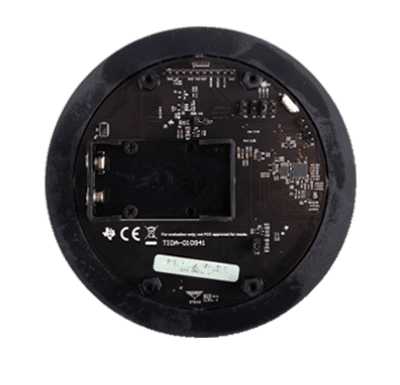This technology is versatile, finding applications in industrial devices such as air conditioner units, air purifiers, and air quality sensors, as well as in commercial and residential smoke and heat detectors.

The Ambient Light-Cancelling Smart Analog Smoke Sensor is a significant leap in fire safety, offering unmatched precision and reliability in smoke detection through its advanced ambient light-cancelling feature. Its smart analog interface guarantees smooth functionality and heightened sensitivity, making it vital for various environments. This sensor’s cutting-edge design greatly enhances smoke detection accuracy while minimising false alarms from fluctuating light, which is crucial for superior fire protection.
The reference design TIDA-010941Texas instruments deliver a cost-effective solution for smoke detection that complies with UL217 9th edition standards for sensitivity and fire room tests through a low bill of materials (BOM) approach. It leverages a modulation-based photoelectric system that rejects ambient light, suitable for both chambered and non-chambered applications. The design achieves a superior signal-to-noise ratio within its signal chain, facilitating the deployment of advanced algorithms that minimise false alarms in smoke detection and enable precise particulate measurement in air quality monitoring. It incorporates the MSPM0L1306 microcontroller’s low-power modes, ensuring up to a decade of operation from a single 9V alkaline battery.
The device features a sophisticated sensing signal chain that employs modulation for enhanced ambient light rejection, boosting both reliability and accuracy. It utilizes a compressive sensing method for efficient power use, vital for prolonging device lifespan. The design’s dual wavelength and angle optical system markedly diminishes false alarms in smoke detection and supports particulate air quality assessment. With a signal chain SNR of 77dB (300 pulses), the design ensures exceptional clarity in detection. Its total current consumption is remarkably low at 5.8uA (16 pulses, 0.1Hz ODR), enabling over 10 years of battery life with a standard 9V alkaline battery, while meeting the rigorous UL217 9th edition standards for safety and performance.
This design surpasses traditional DC-based systems by offering superior ambient light rejection and SNR, crucial for economical smoke detection solutions. It removes the need for an optical chamber, significantly cutting down on materials and assembly costs. Nevertheless, it tackles challenges like insect ingress and dust build-up through a dual-wavelength (Blue and Infrared) strategy and a multi-angle light scattering measurement technique. These innovations facilitate a more precise distinction between actual smoke particles and other particulates, enhancing detection accuracy. This adaptability highlights its potential to improve safety and environmental monitoring in various settings.
Texas Instruments has thoroughly tested this reference design, which includes a Design Guide, Bill of Materials (BOM), schematics, Gerber files, Printed Circuit Board (PCB) layout, and more. Please visit the company’s website for further information on this reference design. To explore this design in greater detail, click here.









